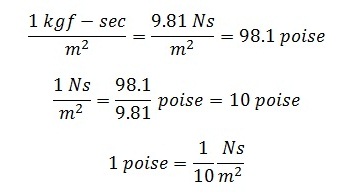

The suction is then released, allowing the sample to flow back through the tube under gravity. In this method, the oil sample is placed into a glass capillary U-tube and the sample is drawn through the tube using suction until it reaches the start position indicated on the tube’s side. The most common method of determining kinematic viscosity in the lab utilizes the capillary tube viscometer (Figure 1). However, for other oils, such as those containing polymeric viscosity index (VI) improvers, or heavily contaminated or degraded fluids, this relationship does not hold true, and can lead to errors if we are not aware of the differences between absolute and kinematic viscosity.įor a more detailed discussion on absolute versus kinematic viscosity, refer to the article “ Understanding Absolute and Kinematic Viscosity” by Drew Troyer. However, it is the oil’s resistance to flow and shear due to internal friction that is being measured in this example, so it is more correct to say that the gear oil has a higher absolute viscosity than the turbine oil because more force is required to stir the gear oil.įor Newtonian fluids, absolute and kinematic viscosity are related by the oil’s specific gravity. The force required to stir the gear oil will be greater than the force required to stir the turbine oil.īased on this observation, it might be tempting to say that the gear oil requires more force to stir because it has a higher viscosity than the turbine oil. Use the rod to stir the oil, and then measure the force required to stir each oil at the same rate. To measure absolute viscosity, insert a metal rod into the same two beakers. Which one will flow faster from the beaker if it is tipped on its side? The turbine oil will flow faster because the relative flow rates are governed by the oil’s kinematic viscosity. Imagine filling a beaker with turbine oil and another with a thick gear oil. The SI unit of kinematic viscosity is square meter per second or m 2 /s.An oil’s kinematic viscosity is defined as its resistance to flow and shear due to gravity. The SI unit of viscosity is the pascal second (Pa Which is the SI unit of viscosity per second? This is the time for 60 millilitres (ml) of fluid to flow through the calibrated orifice of a Saybolt Universal viscometer at a specified temperature, as prescribed by test method ASTM D 88. It is most usually encountered as the centistokes (cSt), equal to 0.01 stokes. How many centistokes are in a Saybolt universal viscometer?
VISCOSITY UNIT HOW TO
How to convert centistokes to millimeter² / second?ġ centistokes = 1 millimeter²/second From: meter²/second meter²/hour centimeter²/second millimeter²/second foot²/second foot²/hour inch²/second stokes exastokes petastokes terastokes gigastokes megastokes kilostokes hectostokes dekastokes decistokes centistokes millistokes microstokes nanostokes picostokes femtostokes attostokes Using the Kinematic Viscosity Converter Converter

Water at 20 ☌ has a kinematic viscosity of about 1 cSt. In engineering, centistokes (cSt) are usually used. International System of Units/Full name What is the kinematic viscosity of a centistoke? The SI unit of viscosity is poiseiulle (Pl). The SI unit for kinematic viscosity is square meters per second (m2/s). One stoke is equivalent to one poise divided by the density of the fluid in g/cm3. How do you convert cSt to SSU?Įxample: Converting Centistokes to SSU Viscosity Calculate b2 = 900.00. The kinematic viscosity of water at 70 degrees Fahrenheit (21 degrees Celsius) is 1 centistoke, and the dynamic viscosity is 1 centipoise. In the case of water, converting between centistokes and centipoise is easy because water has a specific gravity of 1. The physical unit for dynamic viscosity in the centimeter gram second system of units (cgs) is the poise (P), named after Jean Poiseuille. Which is the SI unit of viscosity per second?ĭynamic viscosity: The SI physical unit of dynamic viscosity (μ) is the Pascal-second (Pa s), which is identical to 1 kg m−1 s−1.How many centistokes are in a Saybolt universal viscometer?.How to convert centistokes to millimeter² / second?.What is the kinematic viscosity of a centistoke?.


 0 kommentar(er)
0 kommentar(er)
